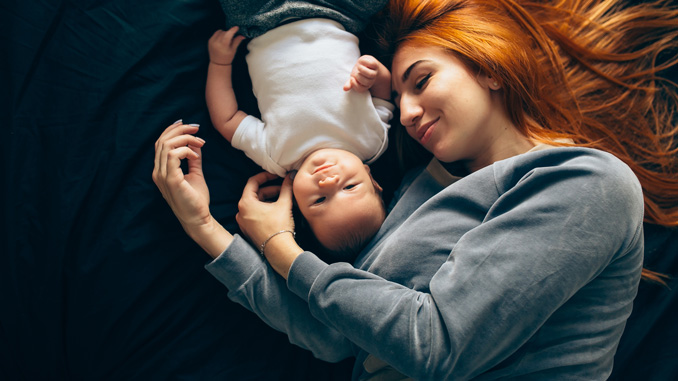
The Danish Parenting Concept Taking the Nation by Storm
You’ve likely heard the term before even if the definition was unclear. That’s because hygge—a Danish word without a direct English translation—is a little hard to describe. But we’re going to try. Hygge (pronounced “hoo-ga”) means to acknowledge a feeling or moment that is cozy, charming, or special. A closer translation is something akin to, “to cozy around together.” The word isn’t new, but more recently experts have translated hygge into a way of parenting, a Danish lifestyle that lends itself to raising happy, capable kids.
So how can you embrace hygge at home? The idea is to spend a lot of low-key quality time together, free of distractions. There is also a definite emphasis on getting cozy and nurturing familial bonds through physical and emotional connections.
Why do we care? Well, the Danish have created a reputation as the happiest people on Earth, so if happiness is the goal, we might have a thing or two to learn.
Start Small
As with anything, adopting a new lifestyle, or in this case a state of mind, doesn’t happen all at once. For many, picking out a few Danish parenting ideas and principles will be enough. Others may decide to more fully integrate this concept into their life over time.
Start by choosing a few ideas or suggestions that encourage a feeling of hygge. Then, put those in practice. As the first round of ideas begins to feel like the new normal, add in a couple more or increase the time you spend working toward hygge, always adjusting it to your family’s individual needs and preferences.
Even as you progress, hygge is never something to be done 24/7. Hygge is the idea of finding togetherness and calm in moments, not all day everyday. Even the Danes don’t feel hygge that much. And to that point, over time hygge should be less of a conscious practice and more of a feeling and routine. It’s believed that people in Denmark don’t put a lot of thought into finding hygge; instead it is a feeling that is ingrained in them through routine activities that promote hygge.
Grasping the Intangible
Hygge is best described as a feeling, a mental state, and an inner peace. This makes becoming a hygge family a little gray. There isn’t simply one thing to do that embraces hygge; instead there are several options that create a feeling of hygge in your household.
In a lot of ways, hygge is about connecting with your children. It involves giving your full attention (not always, but in these quiet, still moments), doing something cozy together, and embracing not being busy. At its core, hygge promotes a sense of calmness that kids and adults both respond to.
Hygge doesn’t mean you have to do nothing. Instead, look for activities that are unstructured and can be done as a family. Engage with each other while doing, but don’t over plan because then you end up forgoing the “free time” part of the concept that helps promote that inner calm we wish we had as parents—and our children as feral animals—both possessed.
Make Time
Carve out small parts of the day or week to engage in activities that encourage hygge. For example, pick one night per week to be family night where everyone gets home at a decent hour and spends time alone together.
During this evening put the cell phones away, do not answer work phone calls or emails, and pick an activity that encourages bonding, may it be painting, watching a movie, or playing board games. There are just a few (loose) rules. Everything must be done together, the activity should be reasonably calm, and during the activity you should find time to connect either physically, emotionally, or mentally.
Get Started
Try some of these tasks.
- Sip hot chocolate in front of a fire
- Wear pajamas in the middle of the day or early evening
- Get comfortable and close with blankets and sweaters
- Turn off the screens and have a conversation over tea
- Eat dinner on the couch and snuggle while watching a movie
- Play board games by candlelight
- Bake or cook together
Why Kids Like It
Hygge encourages people—like overly busy Americans—to take time to slow down. In these moments, the focus is on building intimacy with others. Children like it when parents slow down and focus on family; it can help children feel heard and loved. This, in turn, creates an inner peace and confidence that will help kids thrive in life. It also sets them up to find that same peace and stillness in times of chaos as they grow, and hopefully share the same ideals and principles with future families. After all, that’s why it works for the Danes; they aren’t aware of hygge because it is simply a way of life to them.
Hygge tends to go against some of the norms American families are used to. For example, hygge demands families to be less busy and to give in to quiet, perhaps unstructured, time as a family. While in America we promote enrichment activities and extracurriculars, hygge is the idea of forgoing these priorities (sometimes) in favor of something more serene.
The activities that lead to hygge specifically cater to finding calm and building connections with others. Hygge does not involve yelling or drama, it is the ability to shed that stress and negativity at the door and instead connect. But hygge isn’t only for families; it works for friends and adults, too.
Summer Hygge
It’s no secret that hygge activities are often promoted most during fall and winter. After all, Danes endure long, dark winters every year. The good news is that hygge can also be felt in the summer months. Get a little creative with the activities to make hygge fit the warm Central Valley summers we’re used to in San Joaquin County. The goal is to maintain the stillness and togetherness in every one. Honestly, hygge is illuminated by any practice that builds togetherness in a “cozy” way, so you don’t need cold weather to feel it.
Call-Out//Find Hygge in Summer
- Have a picnic in a park
- Plan an evening beach trip
- Stargaze on a blanket in the backyard
- Take a night swim
- Watch the sunrise or sunset in comfy clothes
- Camp
Be Aware
So much of hygge is the pleasure that comes from these actions. Hygge isn’t the act itself, but the appreciation you feel after engaging in an activity. Be aware of the feeling you get after cozying up with family and enjoying a quiet moment—that’s what hygge is. As Americans, to fully understand hygge we need to be aware of it when it hits. Eventually, hygge will fade into the background and as you continue to prioritize family time, you’ll feel it without really thinking about it.

